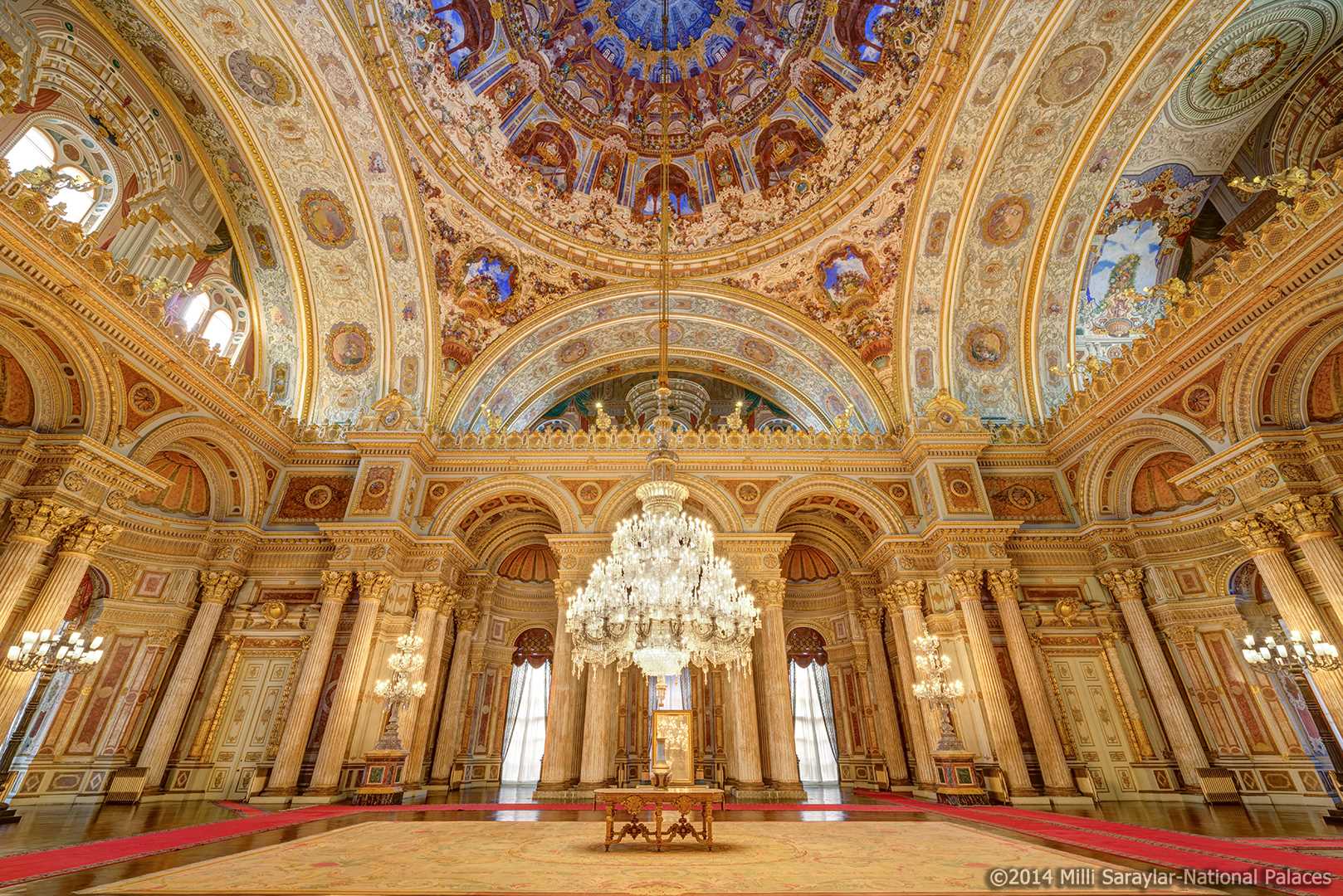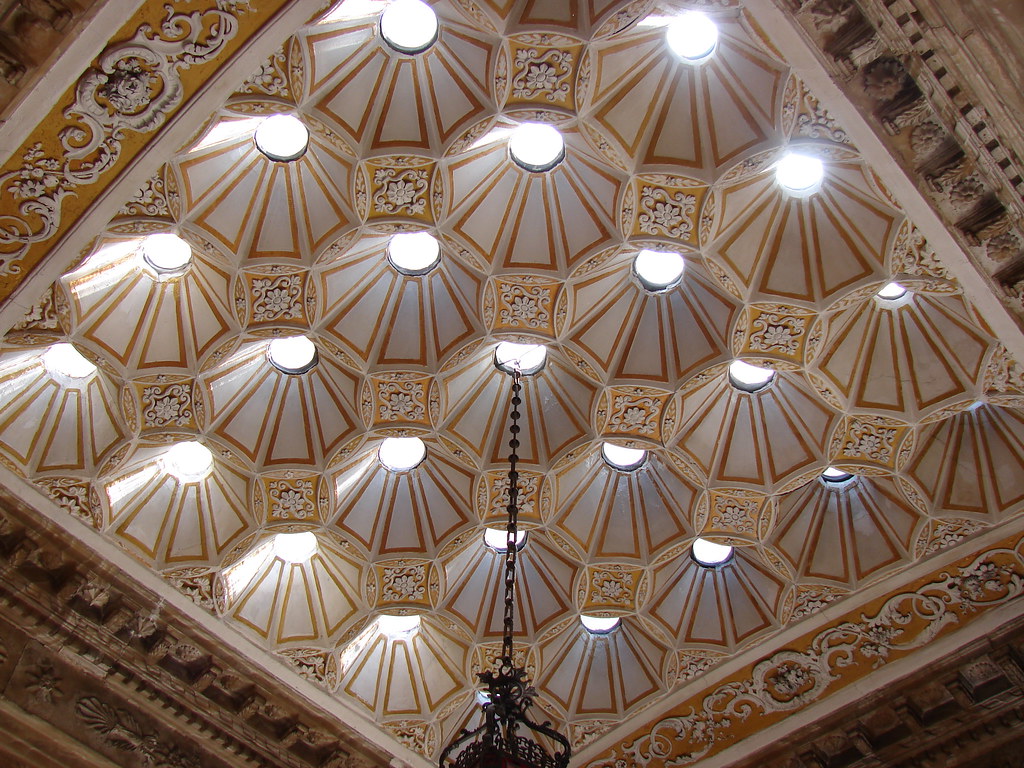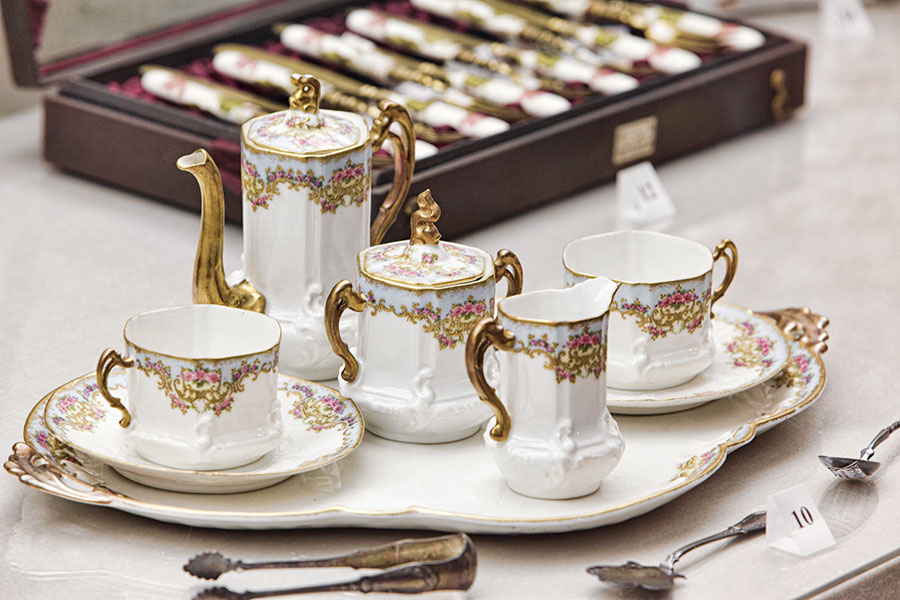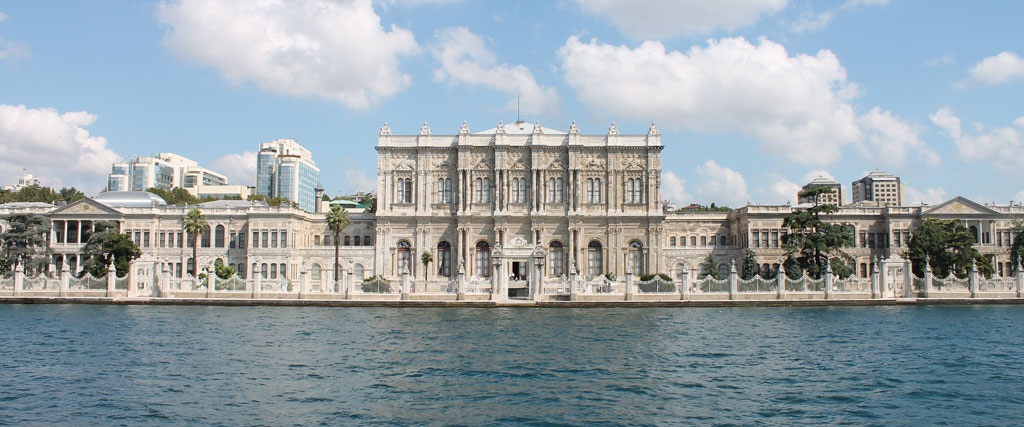Built as a rival to Versailles Palace in France, Dolmabahçe Palace is located on the coast of Bosporus, in Istanbul. In 2019, the Palace received over 1 million tourists. It never failed to amaze visitors with its luxury, beauty, flamboyance, and radiance.
The Palace housed the later Ottoman Empire sultans. Sultan Abdulmecit constructed it in 1843-1856, aiming to reform and modernize the Ottoman Empire according to European standards through the Tanzimat Reforms.
Interestingly, despite the Ottoman Empire’s investment in numerous luxurious palaces like Beylerbeyi, Dolmabahçe, Çırağan, and Yildiz, the empire’s collapse quickly led to overwhelming foreign debt. Constructing such an extravagant palace nearly caused the state budget to go bankrupt and ultimately relied on foreign loans for completion.
A Brief History of Dolmabahçe Palace
![Francis Bedford (1815-94) - The New Palace, the River Gate [Dolmabahçe Palace. Istanbul, Turkey]](https://www.rct.uk/sites/default/files/styles/rctr-scale-1300-500/public/collection-online/0/a/335833-1351702304.jpg?itok=1e51kCIn)
Dolmabahçe Palace, an Istanbul attraction, was originally an imperial garden. Over time, it was transformed into a wooden palace named Dolmabahçe.
Sultan Abdulmecit built the grand palace after his father’s death, symbolizing a departure from Topkapi Palace. Topkapi remained significant as it held important Islamic relics. However, Abdulmecit only lived in Dolmabahçe for nine years before his death.
It then served as a state residence and later became the presidential residence for Mustafa Kemal Ataturk. After his death, the palace was restored and is now a popular museum.
The Architecture of Dolmabahçe Palace

The palace, covering 64,100 sq. meters, contains Selamlık, Muayede Salonu, Harem, and Prince’s apartments. It also includes servant apartments, staterooms, kitchens, a mosque, a school, baths, pavilions, and a theater. The exterior is adorned with Marmara Island’s white marble.
The palace is a three-story building with 46 halls and 285 rooms. Its interior, designed by French decorator Sechan, reflects the style of French palaces and villas.
Famous European artists like Zonaro and Aivazovski adorned the palace with their paintings. The palace boasts 36 Bohemian and Baccarat crystal chandeliers, including a massive 4.5-ton one in the Ceremonial Hall.
What to see in Dolmabahçe Palace?
The Palace extends for 600 meters along the European shore of the Bosporus. Its outstanding white façade can be seen from the ferries and when you see it from the sea, it gives you a better idea about how big and eminent it is.
1. Dolmabahçe Mosque

The mosque and palace were built in 1853 by Nikogos Balyan and are in the same neighborhood. Prior to entering the gate, it is recommended to visit the mosque first. Bezmialem Valide Sultan initiated its construction, which was completed by his son Sultan Abdulmecit. Balyan also finished the Clock Tower in 1854, located a few meters ahead.
2. Clock Tower

Before entering the main gates, observe the Clock Tower adjacent to the Palace. This tower was a later addition to the palace, constructed in 1890 by Sultan Abdulhamit II, 40 years after its initial construction. Standing at a height of 27 meters, the tower consists of four stories. Renowned French clock-maker Paul Garnier was responsible for its construction, and it continues to accurately keep time.
3. The Gates

The Palace had two entrances, each with elaborately adorned gates. The first, known as the Treasury Gate, now serves as the entrance for visitors. The second entrance, the Imperial Gate, also remains guarded by an honor guard to this day.
4. Dolmabahce Gardens

Before entering the palace, visitors can enjoy strolling through the expansive imperial gardens of the Ottoman Empire. These beautiful gardens, located on the shores of the Bosporus, are adorned with various flowers, lush green grass, and adorned trees, creating a picturesque setting on a sunny day. Within this vast garden, there are 16 pavilions and a grand palace. These gardens have been in existence since 1614, during the reign of Sultan Ahmet, and the palace was constructed within them. A café is also available, but it tends to be crowded with tourists.
5. Ceremonial Hall

The vast reception hall has 56 columns and a four-and-a-half-ton crystal chandelier with 750 lights. This chandelier was gifted by Queen Victoria of England and is the largest in the world. The hall’s dome reaches a height of 36 meters. The Ceremonial Hall is renowned as one of the finest Palace Halls globally, with a size of 1800 sq. meters.
6. Harem

The Harem was where the sultan’s mother, wives, concubines, and children with their servants resided. Each palace had its own separate Harem building. It was the most secluded area of the palace, restricted to the Sultan and princes. The building consisted of multiple apartments and a Central Hall where women gathered for tea parties and ceremonies. Additionally, there were baths, a school, and a maternity ward.
7. State Rooms (Selamlık)

The State Rooms consist of sea-facing and land-facing sections. The sea-facing quarters were occupied by grand viziers and ministers, while the land-facing rooms were assigned to administrative staff. All of the rooms are lavishly decorated with extravagant luxury.
8. Sultan’s Bathrooms

The palace has two bathrooms. The first one is located in the main section, adorned with marble. The second one is situated in the Harem, embellished with violet flowers.
9. Ataturk’s Room

Mustafa Kemal Ataturk, the first president of Turkey, used the Palace as his base in Istanbul. He died here in 1938 at 9:05 am from cirrhosis of the liver. All the clocks of the palace are set to 9:05 to symbolize his death. His bed, covered completely by the Turkish flag, is on display.
10. Museum of Palace Collections
Housed in the palace’s former kitchens, the museum is located at the eastern end of the palace. It displays 42,000 diverse items that once belonged to the royal family, ranging from bath slippers, toys, and clothes of the princes and princesses to sewing machines and delicate tea sets. Exploring these belongings will offer a vivid glimpse into the opulent lifestyle of the Ottoman imperial family.

Frequently Asked Questions
Is Dolmabahçe Palace worth seeing? Yes, The Palace is well worth visiting. Its stunning architecture, lavish interiors, and historical significance make it a must-see for anyone interested in Turkish history and culture.
How much time to visit Dolmabahçe Palace? A comprehensive tour including its beautiful gardens and museum, typically takes about 2-3 hours.
Which is better, Dolmabahçe or Topkapi? It depends on personal preferences. Topkapi Palace is older and has a fascinating array of historical artifacts, including items belonging to the Prophet Muhammad. Dolmabahçe Palace, on the other hand, offers more grandeur with its European-influenced architecture and extravagant interiors. Both are unique in their own right.
Who lived in Dolmabahçe Palace? The Palace was the administrative center of the Ottoman Empire from 1856 to 1887 and from 1909 to 1922. Sultan Abdulmecid I, Sultan Abdulaziz, and Sultan Mehmed V Resad lived here. Also, Mustafa Kemal Atatürk, the founder and first President of the Republic of Turkey, used it as a presidential residence and died there in 1938.
What does Dolmabahçe mean? “Dolmabahçe” in Turkish means “Filled Garden” or “Filled-In Garden”, which is a reference to the fact that the site was created by filling in the shoreline of the Bosphorus.
